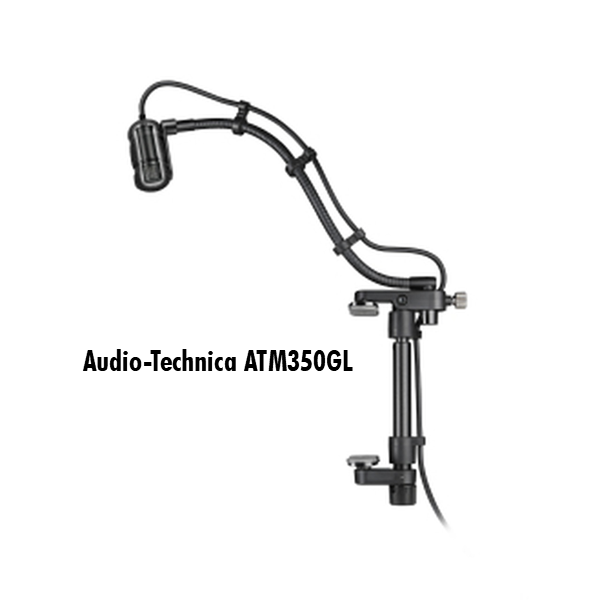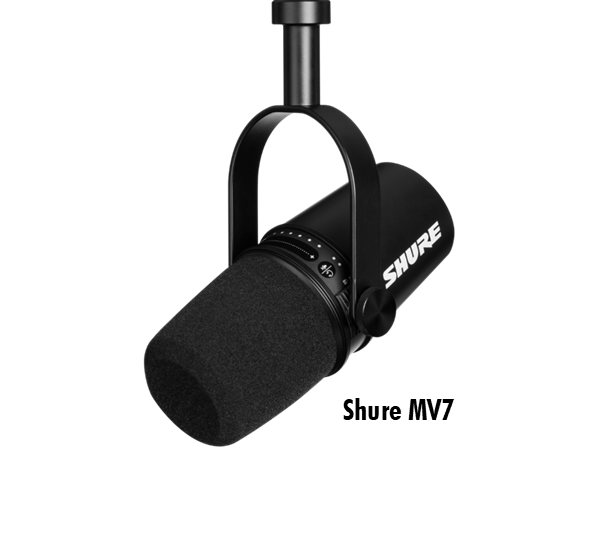Electro-Voice ND76SThere are A LOT of options when trying to choose a microphone. How can you quickly narrow down the choices to find the best mic for you? Here are some guidelines for choosing the best wired microphone:
1. APPLICATION: These are pretty easy to breakdown. The most basic types of mics are as follow:
a. Vocal (these are mics that are usually handheld and have a cardioid or hyper-cardioid pick-up pattern. This means they are picking up the sound directly in front of the mic). Examples of vocal mics are the Electro-Voice ND76S or the Shure SM58-CN.
b. Instrument (these are similar to vocal mics in
pick-up pattern, but streamlined to pick-up different parts of the spectrum and
also made to mount easily depending on the given type of instrument). Examples of instrument mics are the Audio-Technica ATM350GL or the Shure BETA 57A. 
c. Podium (these are usually gooseneck mics with a long stem that may be bent for speakers of different height; they have a fairly straight-on pick-up pattern). Examples of instrument mics include the Audio-Technica PRO49QL or the Atlas Sound M600-DT.
d. Recording (these are finely tuned microphones that are designed for maximum accuracy and warmth of sound). Examples include the Audio-Technica AT4040 or the Electro-Voice RE27N/D
e. Podcast or Livestream (these are designed for
warm pick-up and are sometimes designed to hook right into a computer or video camera). Examples include the Shure MV7 or the Heil Sound PR77DP
f. Choral (these have an omni-directional pattern that is designed to pick-up sound from a wider source; they are usually hung from above or mounted on a mic stand in front of a group). Some great examples are the Audio-Technica U853R or the Shure MX202W-A/C.
g. Boundary (these also have a wider pick-up pattern depending on the application and are usually placed on the floor, on a conference table or on an altar). Check out the Tascam TM-90BM or the Audio-Technica PRO44.
2. CONNECTION: What are you hooking the mic into?
a. Sound System: Most of the mics above will be connected via a microphone cable (3-pin XLR) into a sound console or microphone “snake” that feeds directly into a sound system (amplifier, equalizers and speaker).
b. Computer: Some mics are meant to hook directly into a computer. These mics will either have a USB connection or an iOS connection. They have added internal electronics that allow the signal to tie-into your computer. If you have a standard 3-pin XLR mic, you will require an interface if you are hooking directly into a computer.
c. Wireless Mics: Not discussed herein, but any “wireless” system requires both a transmitter and a receiver. The receiver must connect into some type of sound system that will amplify the sound.
3. LEVEL OF NEED/ADVANCEMENT: How much you spend on a mic can vary greatly depending on your requirements.
a. Beginners: A beginning vocalist will do fine with an inexpensive hand-held vocal mic with a basic cardioid pattern. This can be swapped for a more expensive hyper-cardioid mic with broader and more accurate tones as the vocalist advances. This would apply equally for instrumentalists, recording set-ups, podcasts, etc.
b. Venue: A gooseneck mic at a middle school auditorium may be chosen for price and durability over crisp sound reproduction. A gooseneck mic for a government speaking platform may be chosen for sleek design and accurate sound reproduction over cost.
4. OTHER FACTORS: There are many other factors that will help you narrow down your choices:
a. Internal Electronics: Mics may be dynamic, condenser, ribbon or USB enabled. Here are descriptions in the most basic of terms:
i. Dynamic Mics – Moving coil within a magnetic field. These are more durable, less sensitive to sound-pressure (making it better for the acute sounds of instruments and other “loud” noises).
ii. Condenser Mics – Works via capacitance instead of moving coil. Best for accurate sound reproduction, but more expensive and more complicated.
iii. Ribbon Mics – Uses a thin metal ribbon to pick-up air speed as it moves across. This is an older style of mic that is becoming popular again. Has a “warm” sound. Best for situations where sound is isolated.
iv. USB Mics – as noted earlier, these contain internal electronics that include a preamp and some type of analog to digital converter. They will require the use of software to set the levels, echo, warmth, EQ, etc.
b. Price: There are many great mics that may be purchased on a tight budget. Looking for the right combination of features (dymanic, cardioid, XLR, handheld, wired) will help you choose the right mic at the right price.



